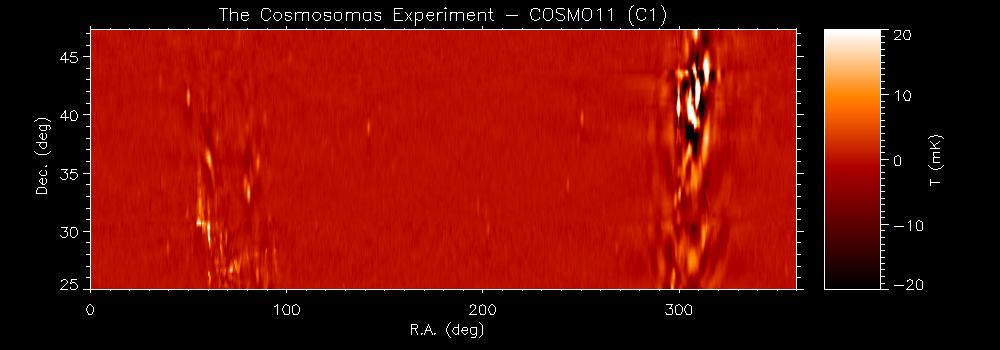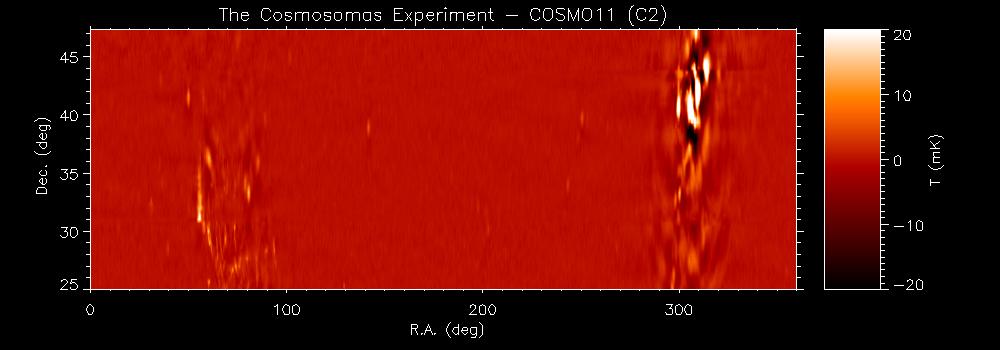COSMOSOMAS Results. Observations with COSMO11
The paper Hildebrandt et al. (2007) presents the analysis of the first analysis of data obtained with the COSMOSOMAS experiment at 11 GHz (COSMO11) at the Teide Observatory (Tenerife). The sky region between 0° < RA < 360° and 26° < DEC < 49° (ca. 6500 square degrees) was observed with an angular resolution of 0.9°. Two orthogonal independent channels in the receiving system measured total power signals from linear polarizations with a 2 GHz bandwidth. Maps with an average sensitivity of 50 µK per beam have been obtained for each channel. At high Galactic latitude (|b|>30°) the 11 GHz data are found to contain the expected cosmic microwave background as well as extragalactic radiosources, galactic synchrotron and free-free emission, and a dust-correlated component which is very likely of galactic origin. At the angular scales allowed by the window function of the experiment, the dust-correlated component presents an amplitude δT approx. 9-13 µK while the CMB signal is of order 27 µK.
The spectral behaviour of the dust-correlated signal is examined in the light of previous COSMOSOMAS data at 13-17 GHz and WMAP data at 22-94 GHz in the same sky region. We detect a flattening in the spectral index of this signal below 20 GHz which rules out synchrotron radiation as being responsible for the emission. This anomalous dust emission can be described by a combination of free-free emission and spinning dust models with a flux density peaking around 20 GHz.


(June 2007)